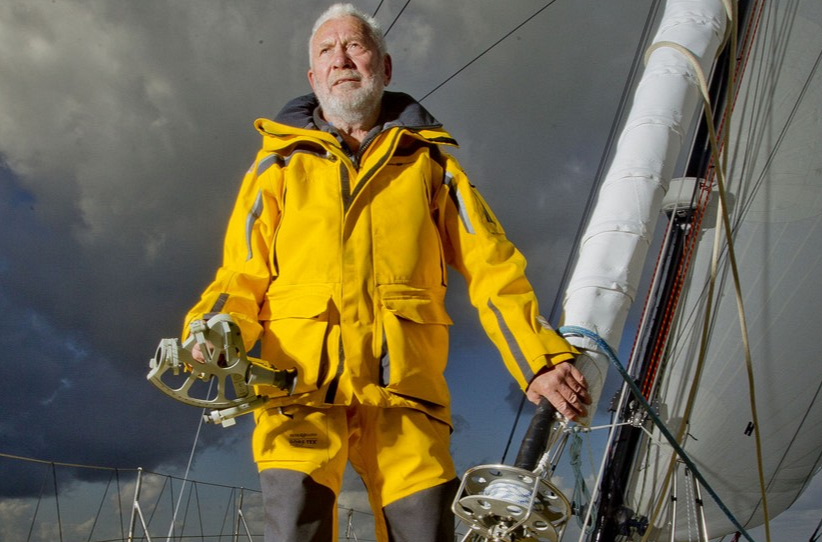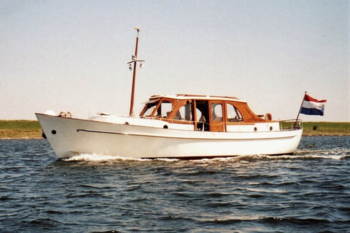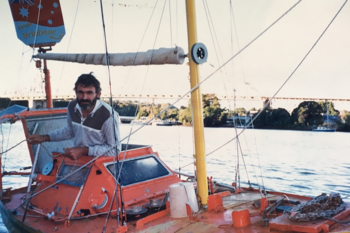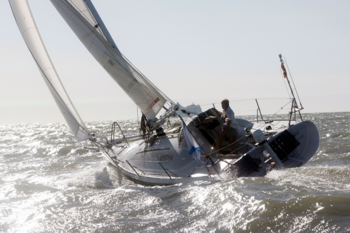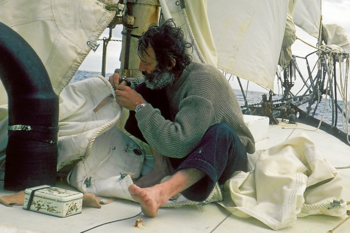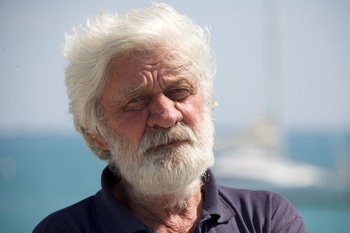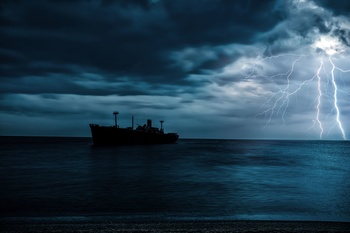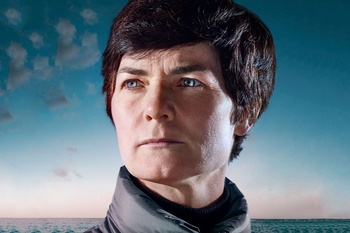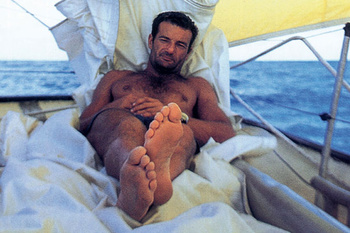- Looks like this Frenchman is building a new boat again, this time a trimaran - Mr David Knox-Johnston
- You can't tell at once, you should know the details first.
- Isn't he going to break Chichester's record or even go round the world without stopping? Everything else in yachting is already done, isn't it? However, let's discuss this in more detail in the evening - Knox-Johnston Sr. is in a hurry to his office, and the vacation of his son, recently appointed second assistant to the cargo and passenger ship Kenya, is just beginning.
On the calendar March 1967
But why wouldn't Robin himself be the first one on a non-stop voyage around the world? Doesn't it take a big, fast boat to get around the world on a 32-foot Suhaili
Ancestors and boats
The baby, born in London on 17 March 1939, was named by three names at once: William (after his grandfather), Robert (traditional) and Patrick (after the patron saint of Ireland). He became the eldest son in a family with strong marine roots. There were at least two captains of the
The last of them had almost 20 years of captivity in Ceylon, escape from there on a sailboat to Indonesia and, after various adventures, finally return to England. Here he immortalized his name by creating a capital work describing the life and living conditions of the island of his long imprisonment and was awarded a portrait in the Royal Greenwich Maritime Museum.

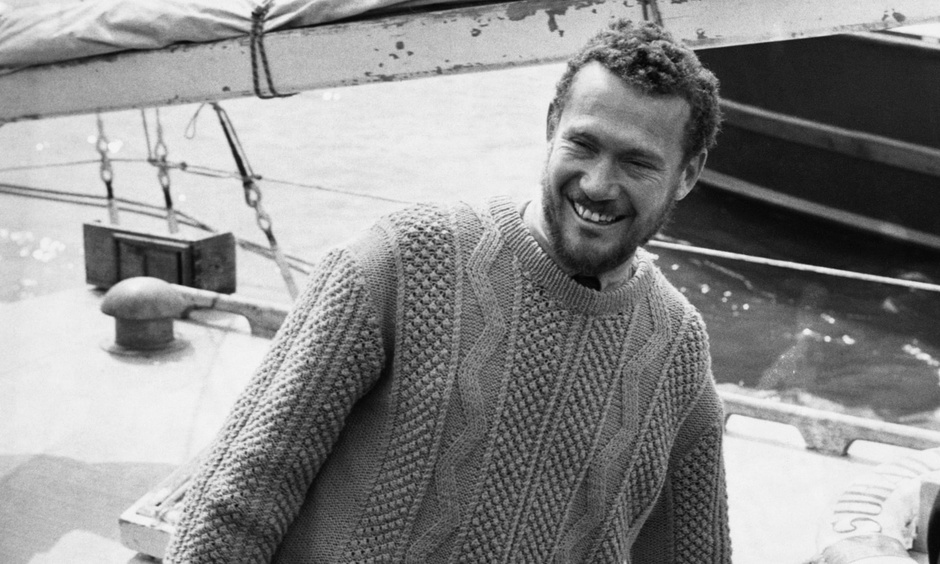
However, family legends also hinted at the much less law-abiding Knox-Johnstons
Anyway, it was little Robin was the only one of the five children of David Robert
Robbie made his first attempt to make a vehicle on the waves as early as four years old.
Alas, the flesh built from orange boxes immediately sunk, unable to withstand the weight of its creator. Similar failure befell the canoe, which has already built
In 1956, Robert failed the entrance exam to the Naval
Says it was done - together with a friend, also from the merchant navy, Robin began to choose the type of boat. Originally, young enthusiasts had been seriously considering buying a local dhow, but they got into it on time because it was almost impossible to find a buyer for such an exotic boat in Britain.

The decision was made in favor of a more familiar kech. The boat had to be relatively small (to fit in the budget) and at the same time comfortable enough for long journeys. Having received from one of the English firms the standard project of enough old-fashioned family «boat», friends have taken up its refinement. That's how Suhaili came into being.
Adventure Wind
The yacht was laid out at Kolaba Shipyard (Bombay) in November 1963 and was built by local craftsmen using the simplest tools and with centuries of proven technology. The process was slow and it was not until December 19, 1964, that the ship was finally launched and christened... with coconut milk to choral mantra singing by native workers. Named after the local southeast wind in the Persian Gulf, the Suhaili did not look much like a racing boat, but at first glance gave confidence in its complete reliability.

Specifications:
Extreme length (LOA): 44 ft (approx. 13.41 m).
Hull LOA: 32 ft 5 (9.88»m)
Waterline length: 28 ft. (8,53 м)
Width: 11 ft. 01» (3,37 м)
Precipitation: 5 ft. 06» (1,67 м)
Sheathing thickness: 1.25» (3.18 cm)
Carrying capacity: 14 tons
Stock of water: 86 gallons (325.5 l)
Engine (diesel): 38 hp.
Sailing equipment: Bermudian Quech.
Sail area: 666 ft2 (approx. 62 m²)
The Suhaili hull was made of Indian teak, from which many modern boats can only afford a deck.
On Suhaili, almost everything has been made of teak: keel, bends, stringers, deck decking, cabin trim and finishes.
Additional stability was provided by an iron ballast keel weighing 2.25 tons, which was attached to the hull with 14
It took another year for the boat to be finally finished and equipped, as most of the rigging and equipment had to be taken from England. It was only in December 1965 that
Suhaili: towards a dream.
After leaving Bombay, Suhaili crossed the Arabian Sea and, after a short stop in Muscat, continued to descend gently south along the east coast of Africa with frequent stops at ports of opportunity. By April 1966, the adventurous travelers had reached Durban, where the entire expedition was firmly grounded. Money ran out, so the friends had to put the boat on the prank at the port of Durban for a while and look for work themselves.
Fortunately, everyone managed to find a job as a captain on a coaster, Heinz as a ship's radio operator and Chris as a clerk for an insurance company. The forced anchorage lasted almost six months: only by October was it possible to save up the sum, which should have been enough for the rest of the journey to England. However, the
From here,
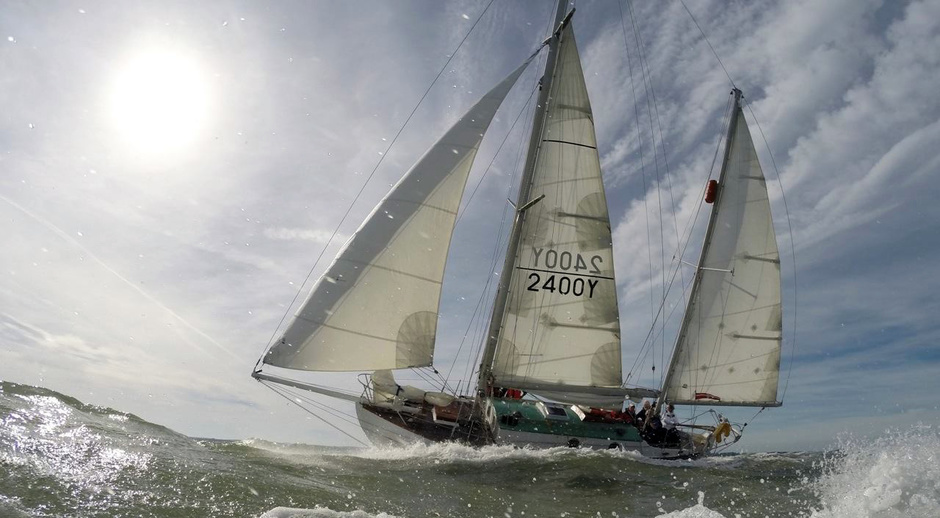
So, Suhaili's first long journey was a success.
«Robust, enduring, long-range, loyal and reliable -»that's how Robin himself characterises his boat.
But is it suitable for an unstoppable voyage around the world?
It cannot be improved.
On 27th May 1967
Is it possible to break such a record? Robert did the simplest calculations and concluded: yes, but not on Suhaili.
On the transition from Cape Town to England, the baby showed a good average speed of 112 miles per day or about 4.7 knots, but for a round-the-world race it is clearly not enough. Yes, and rankout (even after changing the main mast
Based on these considerations, Knox-Johnston decided to build a new boat. He was able to find a suitable project quickly enough: this 53ft
However, the question was once again one of money: at the lowest possible cost, the hull was to be built for £2800, and together with the rigging it was to cost £5000.
Robin made a difficult decision: to sell Suhaili and invest the proceeds in building a boat for a round-the-world trip. At the same time he sent hundreds of letters to leading British companies, trying to find sponsors for his bold idea. Alas, the answer was either silence or polite rejection. The situation was further complicated by the fact that, in January 1968, the Royal Navy called him under its banners for routine training as a reserve officer.
It's been another two months, but there's no one willing to buy a Suhaili.
Meanwhile, on 17 March, the Queen of the British Weekly - the Sunday Times - solemnly announced the establishment of the Golden Globe «Award for the Daredevil», who will be the first to sail around the world alone without entering the ports. The second prize of £5000 was intended for the fastest speed.
The conditions of the Golden Globe Race were extremely simple and at the same time very tough: a boat of any design and size, start and finish - in one of the British ports. It was necessary to go out to sea from June, 1 till October, 31, and the route necessarily had to pass around capes of Good Hope, Lewin and Horn. Participants were not allowed to visit any ports or uninhabited bays (even without going ashore), receive any cargo (including mail), or use outside help. Even an accidental violation of any of the rules meant an automatic drop-out.
The news of the Golden«Globe» further fueled the already boiling sails in the world. Even before the March announcement of the Sunday Times, several yachtsmen began preparing for a single non-stop round the world
Now it's harder to keep a secret, but the chances of attracting the sponsors' attention are much greater.
However, the money was still not enough to buy a new boat, and the time was running out. In addition, closely following potential rivals, Knox-Johnston
In just two months he managed not only to overhaul, but also to significantly modernize his boat.
Suhaili received a new rigging and a set of sails, the wooden bizzan mast was replaced by a shorter and lighter duraluminous mast. Thus, it was possible to increase significantly the stability of the ketch, avoiding «adrenaline» rolls at every change of tack.
Special attention was paid to the ship's automatic control system. For the installation of the autorail and additional rudder at the stern there was a special design that gave the boat a curious and technological
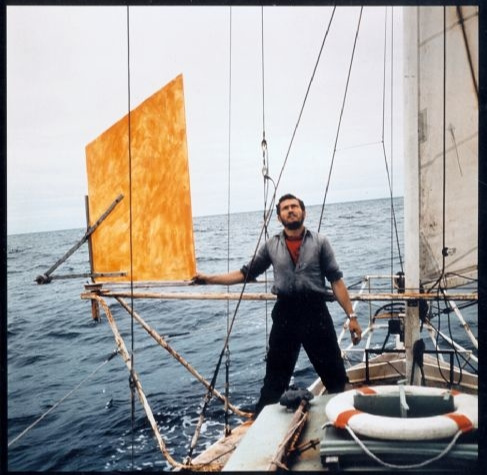
By the way, apart from the unusual auto-steer,
It had to be powered by a special
Finally, it's time to take care of the supplies. Only the simplest products, dried fruits and sardines, were already considered delicacies.
Since the voyage was supposed to last about 10 months, Robin and his company of volunteers had to varnish about a thousand and a half cans of canned food and mark them with a special code, so that after the inevitable self-adhesive labels, the process of eating each time would not turn into Russian roulette. The dehydrated foods, which Knox-Johnston later discreetly described as «extremely convenient if you have enough fresh water, have also not been forgotten.
The need to complete hundreds of big and small (but always important) things caused the start of the voyage to be postponed for two whole weeks. It was not until June 14,
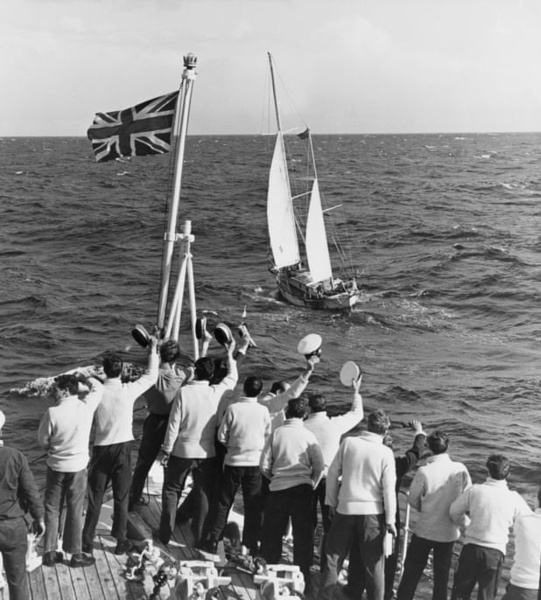
Chasing the Golden Globe.
Already on the 16th
Cotton fibre, canvas strip, resin - all that's left is to put this plug «in the» bottom at a
To distract the attention of these cold-blooded killers,
Suhaili continued her journey, but on her way to the Cape of Good Hope her captain was facing new challenges: soon she had to dig a similar gap in the bottom, but already on the starboard side. Time and again there were problems with the steering wheel, the electric generator failed, which had to be repaired right at the rocking.
Even an ordinary cheese showed extraordinary magnetic properties, deflecting the compass arrow as much as 60 degrees!
On the way to Cape Town, Knox-Johnston was
Storm winds haunted Suhaili at almost the entire Indian Ocean crossing. The boat was put on board several times and only by a miracle could she climb without losing her rank. On the way to Australia, the wind bow finally failed and the cabin was flooded through cracks in the cladding. All this made
Here Robin was again in for surprises.
Alas, at the more than 4,000-mile crossing of the South Pacific, he was much less fortunate than Joshua Slocum. As you know, the
On 17th January
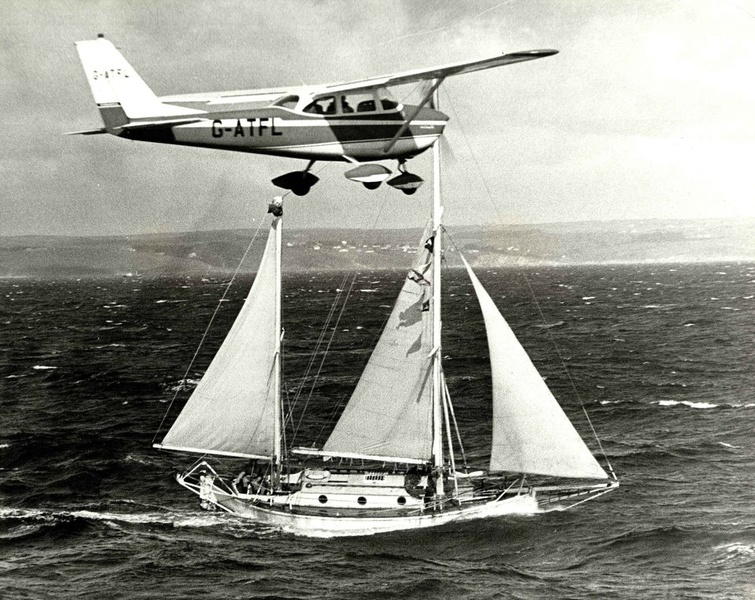
Most sailing experts bet on the French. They even called the exact date of his triumphant return - April 24. Robin was temporarily forgotten, until March 18, when news suddenly came in from Cape Town that Bernard Moiseyes had refused to participate in the Golden Globe Race and set sail for the South Seas, bypassing Cape Good Hope again.
Now everyone has rushed in search of Suhaili, which as if dissolved in the vast Atlantic Ocean.
Only 17 days later it was accidentally discovered southwest of the
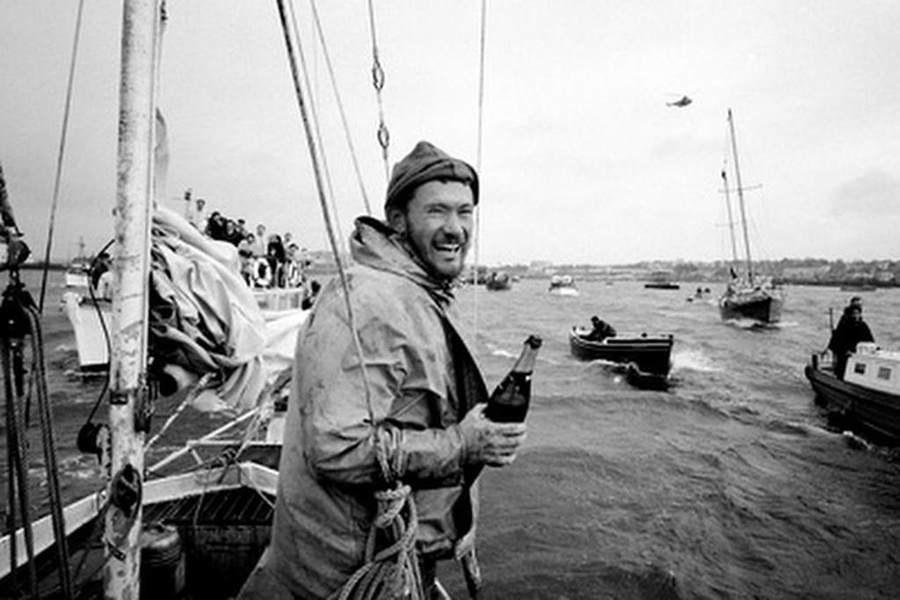
The Golden Globe to Robin was presented by Sir Francis Chichester himself. But the fate of the prize for top speed remained uncertain until mid-summer, when it turned out that the second possible contender for the World Cup.the money prize - Donald Crowhurst - never left the Atlantic and killed himself for fear of an imminent revelation in deception. Thus, Robert
Get the sails down? It's not time yet!
By Sir Knox-Johnston's own admission
It opened the sea to people who had never dreamed of hearing the sound of waves and the rustle of wind on their sails. He built new boats and brought up more and more generations of yacht captains who led them on ocean voyages. He also sailed 11(!) around the world, already as an instructor skipper
Sir Robin was involved in numerous sailing competitions. Twice, in 1970
On 1 July 2018, Sir Robert fired an antique cannon from Suhaili to signal the start of another Golden Globe singles race, launched from the French port of Le Sables d'Olonne. By the way, Suhaili»'s granddaughter«Thuriya, a yacht built in the exact image of an old lady, also took part in this competition. Although this boat (run by Indian skipper Abilash Tomi) never made it to the finish line, having lost its masts in the Indian Ocean, Suhaili's descendants seem to have
According to Sir Knox-Johnston


